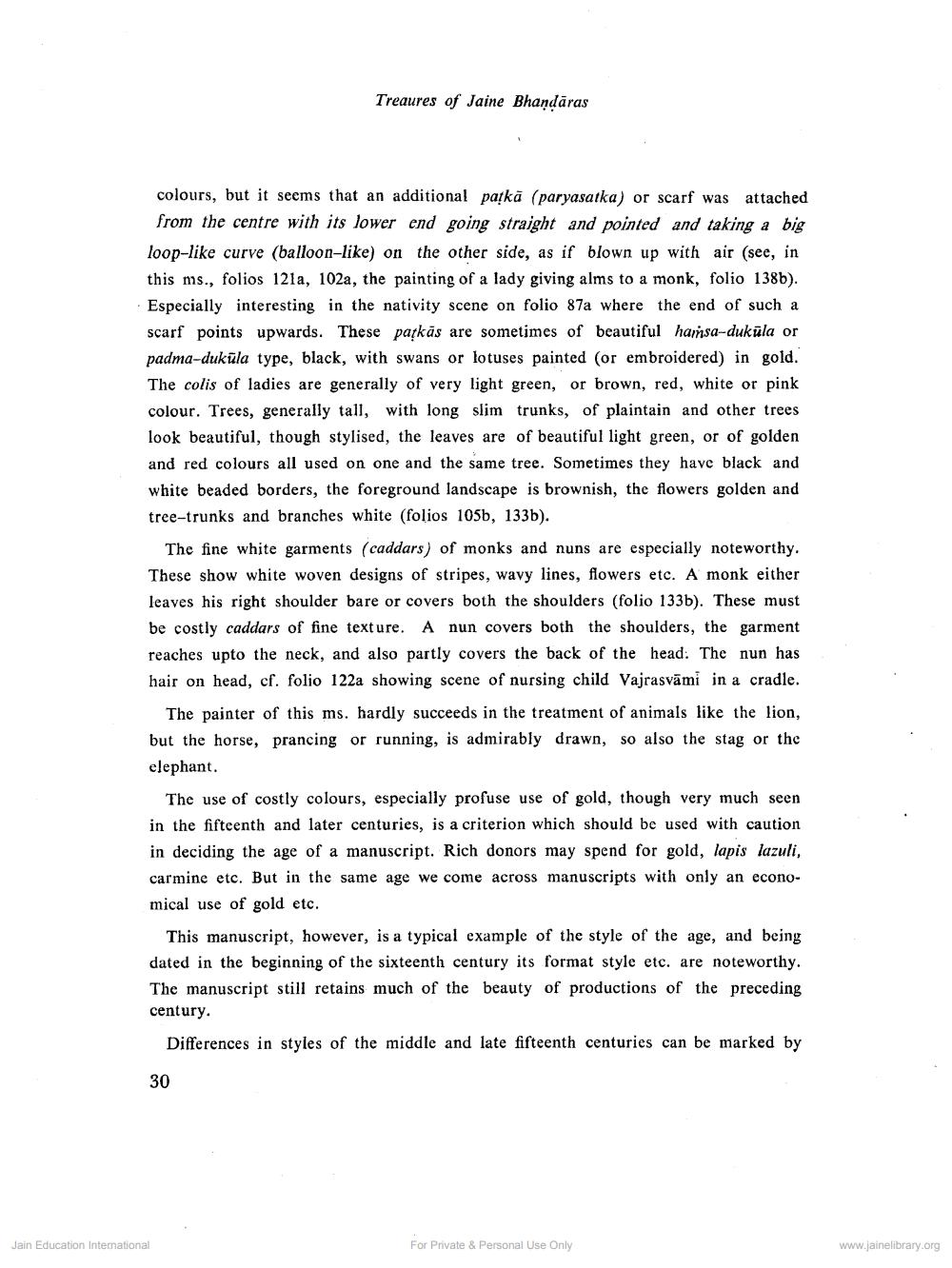________________
Treaures of Jaine Bhandaras
colours, but it seems that an additional parkā (paryasatka) or scarf was attached from the centre with its lower end going straight and pointed and taking a big loop-like curve (balloon-like) on the other side, as if blown up with air (see, in this ms., folios 121a, 102a, the painting of a lady giving alms to a monk, folio 138b). Especially interesting in the nativity scene on folio 87a where the end of such a scarf points upwards. These parkās are sometimes of beautiful hainsa-duküla or padma-duküla type, black, with swans or lotuses painted (or embroidered) in gold. The colis of ladies are generally of very light green, or brown, red, white or pink colour. Trees, generally tall, with long slim trunks, of plaintain and other trees look beautiful, though stylised, the leaves are of beautiful light green, or of golden and red colours all used on one and the same tree. Sometimes they have black and white beaded borders, the foreground landscape is brownish, the flowers golden and tree-trunks and branches white (folios 1056, 133b).
The fine white garments (caddars) of monks and nuns are especially noteworthy. These show white woven designs of stripes, wavy lines, flowers etc. A monk either leaves his right shoulder bare or covers both the shoulders (folio 133b). These must be costly caddars of fine texture. A nun covers both the shoulders, the garment reaches upto the neck, and also partly covers the back of the head. The nun has hair on head, cf. folio 122a showing scene of nursing child Vajrasvāmi in a cradle.
The painter of this ms. hardly succeeds in the treatment of animals like the lion, but the horse, prancing or running, is admirably drawn, so also the stag or the elephant.
The use of costly colours, especially profuse use of gold, though very much seen in the fifteenth and later centuries, is a criterion which should be used with caution in deciding the age of a manuscript. Rich donors may spend for gold, lapis lazuli, carmine etc. But in the same age we come across manuscripts with only an economical use of gold etc.
This manuscript, however, is a typical example of the style of the age, and being dated in the beginning of the sixteenth century its format style etc. are noteworthy. The manuscript still retains much of the beauty of productions of the preceding century.
Differences in styles of the middle and late fifteenth centuries can be marked by
30
Jain Education International
For Private & Personal Use Only
www.jainelibrary.org




